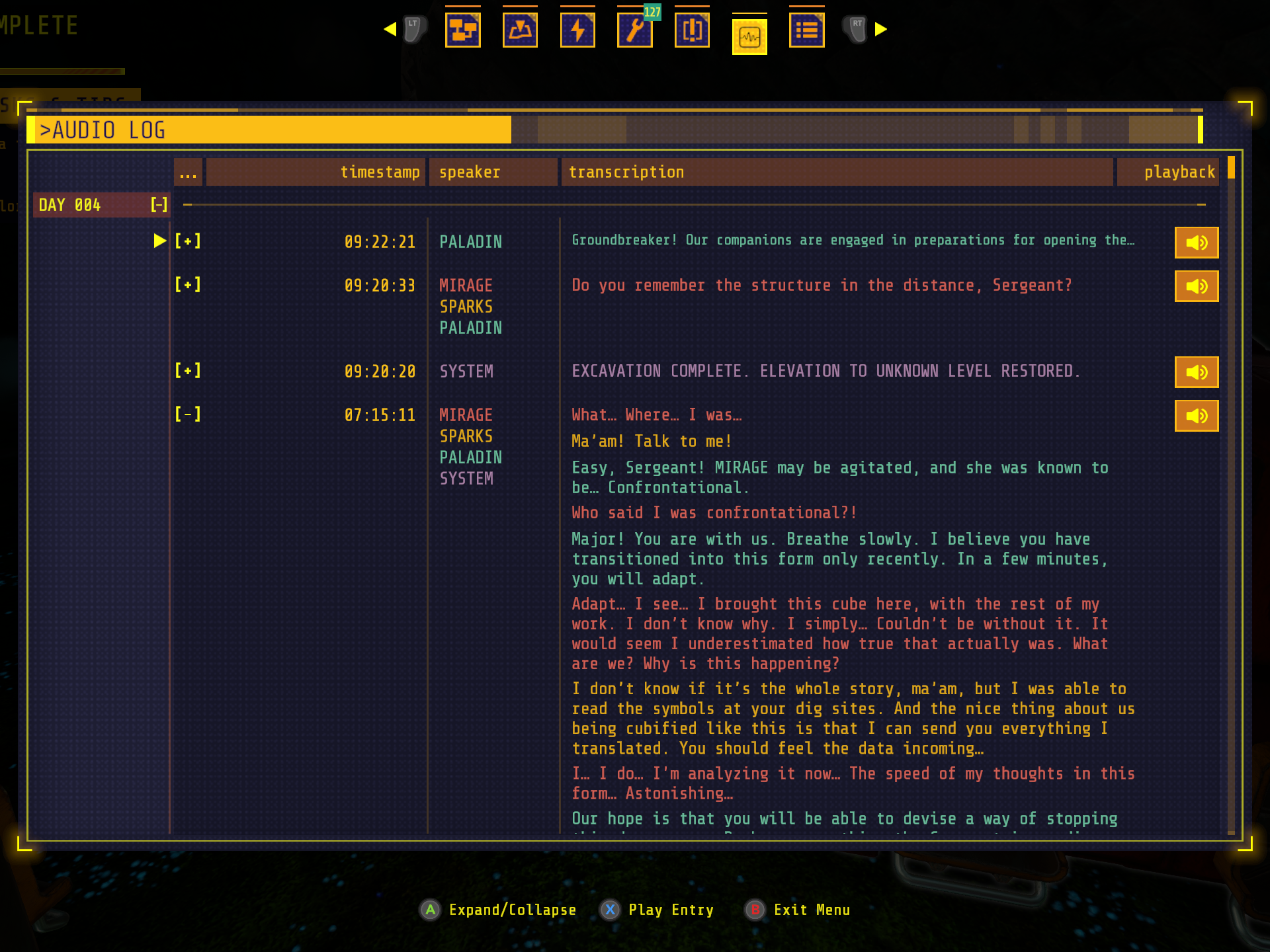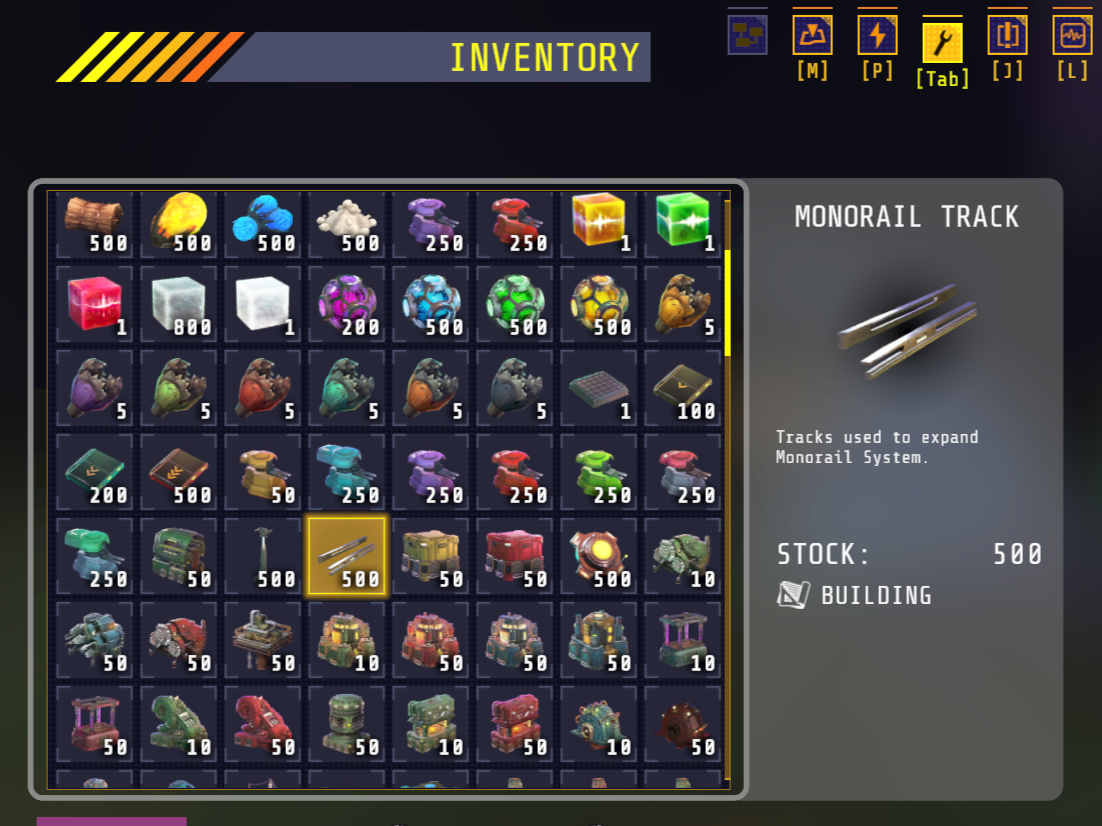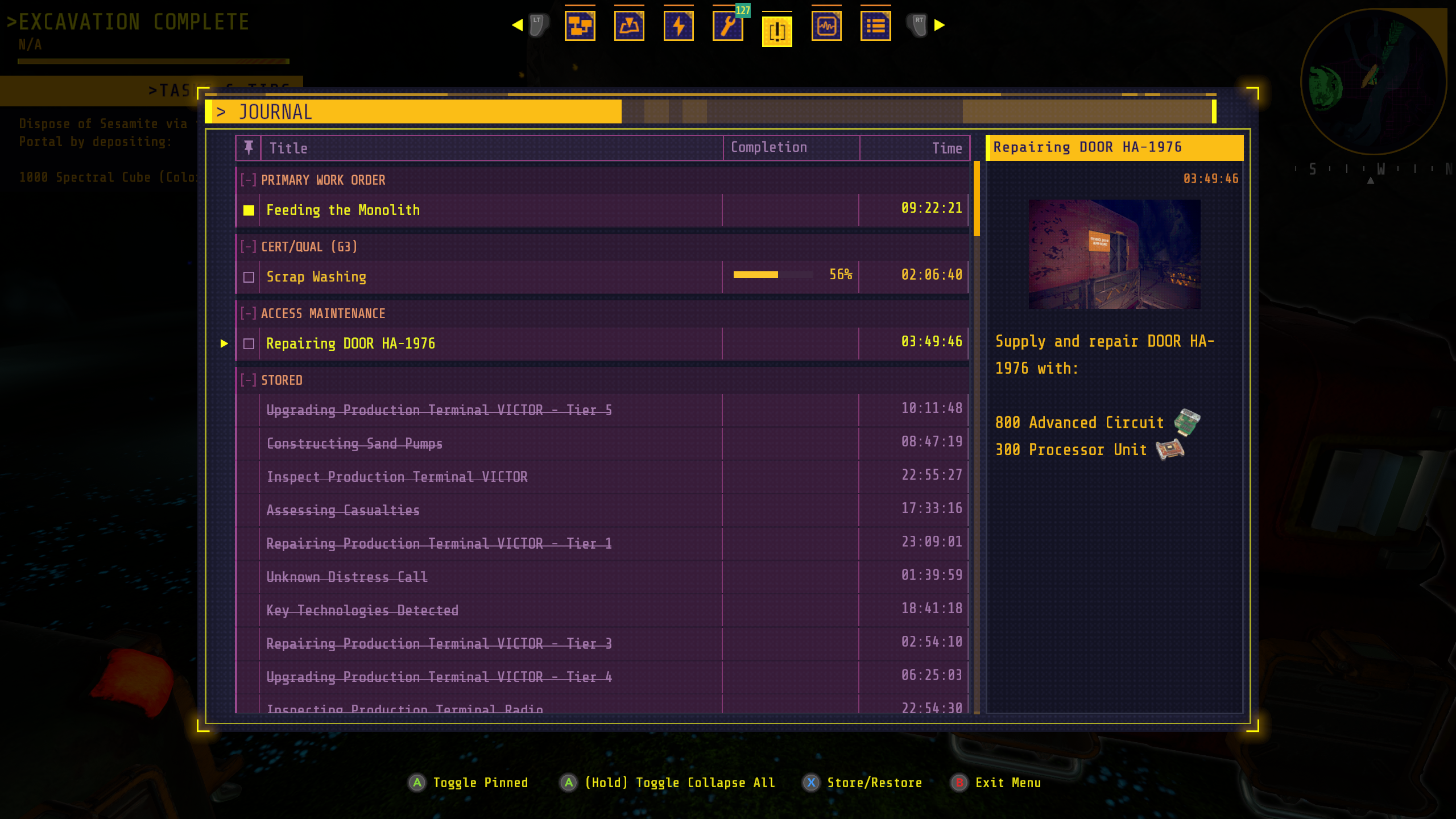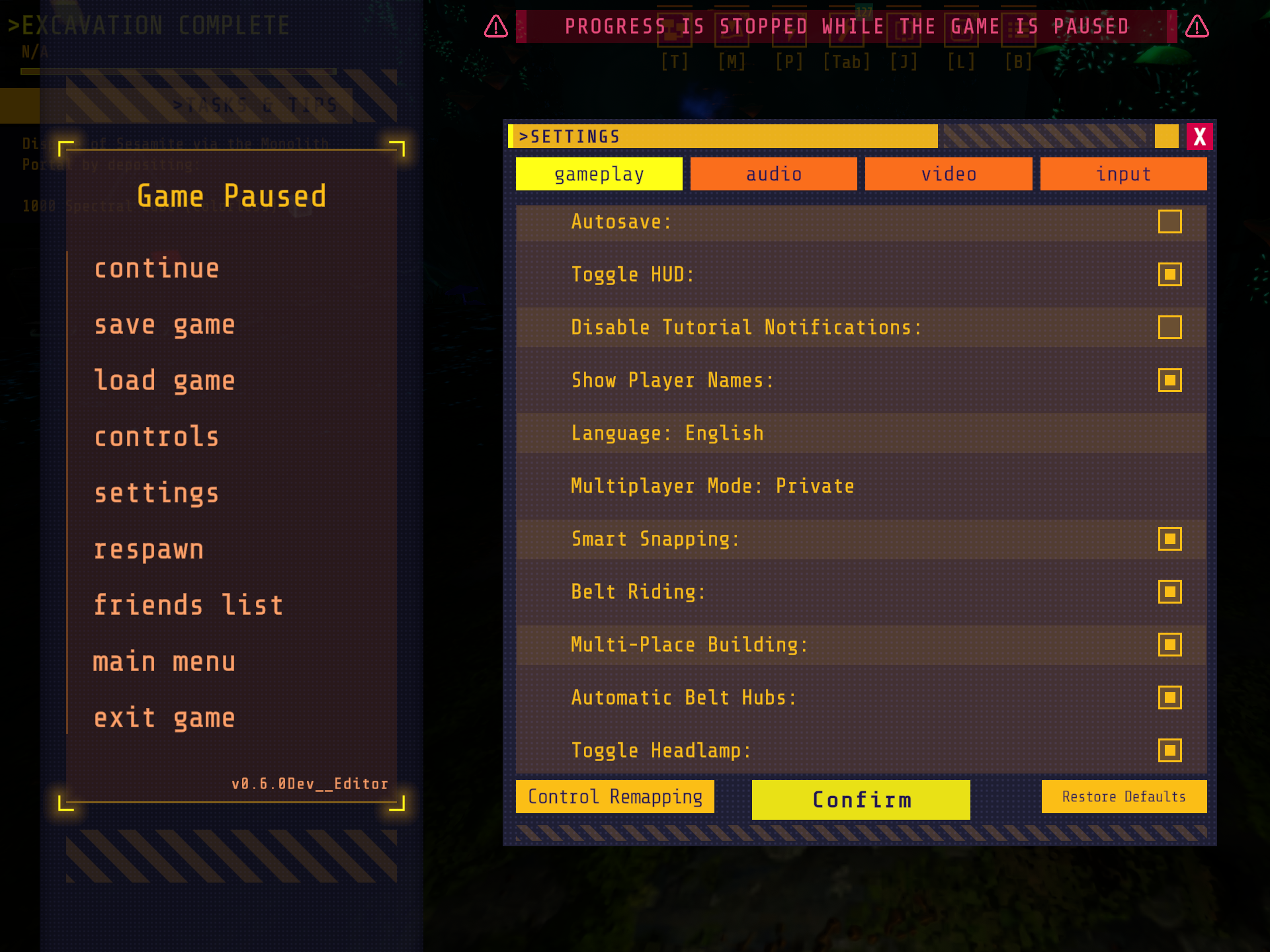The Log Menu was designed to give players access to a full transcript of previously played narrative dialogue, including the ability to replay voiced lines. In a factory automation game where gameplay events can trigger narrative dialogue in the background, this menu helps ensure that important narrative beats or gameplay hints aren’t missed due to timing or system interruptions.
I was responsible for implementing this menu after a well-integrated dialogue system was already in place, which displayed spoken text in real-time through HUD elements. My work touched multiple systems, including dialogue management, quest progression, localization, save data, and UI.
Handling Dialogue Tracking Gaps
One core issue I identified early in implementation was that narrative dialogue playback wasn’t being persistently tracked. While quests triggered dialogue, the actual progression of chained dialogue entries wasn’t stored. This could result in players missing key context if they saved and exited or if the game crashed mid-dialogue.
To solve this:
- I added a list of completed dialogue entry IDs to the save system, capturing exactly which lines had finished playback.
- On game load, I introduced a startup check that detects incomplete dialogue chains and restarts them from the beginning, ensuring the player still receives the full context.
This fix also became foundational for later progression tracking features that relied on specific narrative moments.
UI Implementation
Translating spoken dialogue into a clear, readable transcript posed several unique challenges and opportunities. My responsibilities included:
- Transforming dialogue entry data into a format suitable for transcript display, including timestamping entries with estimated playback times.
- Color-coding entries by speaker, exposing these mappings in the inspector for designer control over aesthetics and clarity.
- Reconstructing chained dialogue as a cohesive block of text that reads naturally while clearly communicating who said what and when.
Shared Menu Functionality
As part of our broader UI systems, the Log Menu shared many functional components with other in-game menus I worked on:
- Input-agnostic controls, supporting both mouse and gamepad navigation.
- Input prompt updates based on the active input device.
- Manual positioning of UI elements to avoid layout system bottlenecks identified during performance profiling.
- Object pooling of reusable UI elements, reducing overhead when handling a large number of transcript entries and maintaining performance in mid-to-late game sessions.
- Carousel menu integration, allowing the Log Menu to work seamlessly as part of the game’s larger menu navigation flow.
Summary
The Log Menu UI was a deeply cross-functional system that addressed both technical and experiential gaps in the narrative system. From enhancing data persistence to implementing dynamic, scalable UI, it showcases my ability to:
- Identify and resolve systemic design issues.
- Implement performant, user-friendly interfaces.
- Collaborate across design, audio, and content pipelines.
- Build with extensibility and designer usability in mind.





